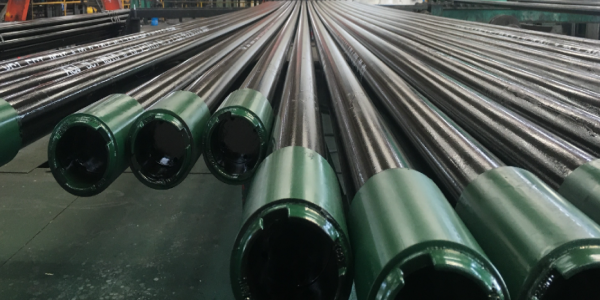At present, major oil fields have entered the "three highs" period, namely high water content, high corrosion and high accident rate. This trend has brought severe challenges, especially the frequent accidents of downhole tools due to severe corrosive media. Therefore, it is particularly important to improve the performance of casing and tubing in downhole service. In order to extend the service life of casing and tubing, the selection of economical and applicable coatings has become the top priority of the oil special pipe coating industry. casing and tubing play a vital role in oil and gas drilling projects. They not only need to withstand extreme pressure and temperature, but also must resist corrosion and wear. Not only casing and tubing need coating protection, but also drill pipes and drill collars. In order to extend the service life of casing and tubing and improve their performance, coating technology came into being.

The meaning and classification of coatings
Coatings refer to the solid continuous film formed on the surface of the substrate after the coating is applied once. According to the type of coating used, coatings can be divided into primer layers and topcoat layers. Generally, the coating formed by coatings is thinner, about 20-50 microns, while high-build coatings can form a coating thicker than 1 mm after one application. The main functions of coatings include protection, insulation and decoration, and are suitable for substrates such as metals, fabrics and plastics.
Classification of inner coatings for casing and tubing
Depending on the different conveying media, the inner coatings for casing and tubing is mainly divided into two types:
Inner drag reduction layer
The inner drag reduction layer is designed to reduce the friction resistance between the pipeline conveying medium and the inner wall of the casing and tubing. The general thickness is 60-80 microns, and this coating does not need to consider the inner pipe joint.
Inner anti-corrosion layer
The inner anti-corrosion layer is used to reduce the corrosion of the conveying medium on the inner wall of the steel pipe, and the thickness is usually above 250 microns or 300 microns. This coating needs to consider the inner pipe joint to ensure the continuity of the inner coating.
According to the type of pipe inner coating, there are dozens of types including vinyl resin, polyurethane, phenolic resin, acrylic resin and epoxy resin.
Importance of Casing and Tubing Coatings
1. Anti-corrosion Function
In a high water content and high corrosion environment, casing and tubing exposed to corrosive media will accelerate their corrosion rate and affect their structural integrity. As a protective barrier, the coating effectively prevents direct contact between external corrosive media and metal surfaces, thereby greatly extending the service life of casing and tubing
2. Reduce wear
During drilling operations, casing and tubing will rub against media such as rocks and mud, causing wear. High-quality coatings can significantly reduce the friction coefficient and reduce the degree of wear, thereby maintaining the structural strength and reliability of casing and tubing.
3. Improve mechanical properties
The coating not only provides a physical barrier, but also enhances the mechanical properties of casing and tubing. The coating material can increase the hardness and tensile strength of the casing, allowing it to maintain good performance under high stress conditions.
Development of coating technology
1. Thermal spraying technology
Thermal spraying technology is a commonly used coating method that sprays the coating material onto the surface of the oil casing at high temperature to form a uniform and dense protective layer. This technology can be applied to metal and non-metallic coatings, and the coating thickness is controllable. It is widely used in various types of casing and tubing coating treatment.
2. Electroplating technology
Electroplating technology deposits a layer of metal coating on the surface of the oil casing through electrochemical reaction, such as zinc plating, nickel plating, etc. Electroplating technology is simple to operate and has good coating uniformity, which is particularly suitable for large-scale production. However, this technology may have certain limitations when processing casing and tubing with complex shapes.
3. Powder coating technology
Powder coating technology uses electrostatic spraying to attach powdered coating materials to the surface of the oil casing, and then forms a coating by high-temperature curing. This method is environmentally friendly and pollution-free, the coating is uniform, and the corrosion resistance is excellent. In recent years, powder coating technology has been increasingly used in the coating treatment of casing and tubing.
4. Nano coating technology
Nano coating technology is a new type of coating technology developed in recent years. By adding nano materials to the coating, the performance of the coating can be significantly improved. For example, nano-ceramic coatings have excellent high temperature resistance, corrosion resistance and wear resistance, and have begun to be used in casing and tubing coatings.
Conclusion
Casing and tubing coating technology has important application value in oil and gas drilling projects. Through continuous technological innovation and development, coating technology not only improves the performance and service life of casing and tubing, but also reduces maintenance costs and promotes the efficient and safe progress of drilling projects. In the future, with the development of intelligent, environmentally friendly and multifunctional coating technology, casing and tubing coatings will usher in broader development prospects. In order to ensure the advancement of technology and the wide application, the establishment of industry standards and technical specifications will be the key to promoting the development of casing and tubing coating technology.






 English
English Español
Español بالعربية
بالعربية











 Phone :
Phone :  Whatsapp :
Whatsapp :  Email :
Email : 


